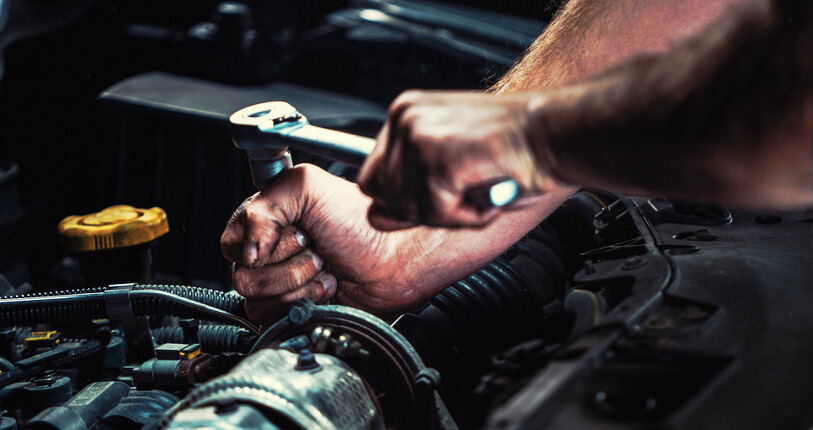Introduction:
Are you tired of shelling out hundreds of dollars for simple car repairs? With a bit of guidance and the right tools, you can handle many common car issues on your own. DIY car repair not only saves you money but also gives you the satisfaction of fixing things yourself. Whether you’re looking to perform basic maintenance or solve minor problems, this guide will walk you through beginner-friendly car repairs.
Why Should You Learn DIY Car Repair?
- Cost Savings: Auto repair shops often charge hefty fees for labor and parts. Learning how to fix minor issues can significantly cut down on your expenses.
- Convenience: You don’t have to wait for an appointment or spend hours in a garage. Fixing things yourself means you’re back on the road faster.
- Empowerment: Car troubles can be stressful, but knowing how to diagnose and solve basic problems gives you confidence and control over your vehicle.
Tools You’ll Need for DIY Car Repairs
Before diving into repairs, make sure you have the right tools on hand. Some basic tools every beginner should own include:
- Socket and wrench set: To loosen or tighten bolts.
- Screwdriver set: Essential for removing parts like battery clamps or panels.
- Jack and jack stands: For safely lifting your vehicle.
- Tire iron: To remove and replace tires.
- Oil filter wrench: Useful for oil changes.
- Pliers: For gripping and manipulating smaller parts.
- Multimeter: For diagnosing electrical issues.
- OBD-II scanner: For reading your car’s error codes.
Safety First!
DIY car repair can be fun and rewarding, but safety should always be a priority. Here are a few precautions to follow:
- Use the parking brake and wheel chocks when working on a raised vehicle.
- Wear safety gloves and glasses to protect your hands and eyes from debris or chemicals.
- Never work under a vehicle without proper support, such as jack stands.
- Disconnect the battery when dealing with electrical components.
Top 5 DIY Car Repairs for Beginners
1. Changing Your Oil
One of the simplest yet most essential car maintenance tasks is changing your oil. Fresh oil keeps your engine running smoothly and extends its life.
Steps:
- Lift the car using a jack and secure it with jack stands.
- Place an oil pan under the oil drain plug.
- Unscrew the plug and let the oil drain completely.
- Replace the plug and remove the oil filter using an oil filter wrench.
- Install the new filter, pour in the fresh oil, and check the levels.
Tip: Use the type of oil recommended in your car’s manual, and change your oil every 3,000 to 5,000 miles.
2. Replacing Air Filters
A dirty air filter can reduce fuel efficiency and performance. Replacing it is one of the easiest DIY tasks you can do.
Steps:
- Locate the air filter housing, which is usually near the engine.
- Open the housing and remove the old filter.
- Insert the new filter and close the housing.
Tip: Air filters should be changed every 12,000 to 15,000 miles or as needed, especially if you drive in dusty conditions.
3. Changing a Flat Tire
Getting a flat tire is inevitable, but changing it doesn’t have to be daunting. Here’s how you can do it yourself:
Steps:
- Loosen the lug nuts with a tire iron before lifting the car with a jack.
- Lift the car using the jack until the flat tire is off the ground.
- Remove the lug nuts and take off the flat tire.
- Place the spare tire on, replace the lug nuts, and hand-tighten them.
- Lower the car and fully tighten the lug nuts using the tire iron.
Tip: Always carry a spare tire and make sure it’s inflated and ready to go. You should also check your tire pressure monthly to avoid future flats.
4. Replacing Windshield Wipers
Windshield wipers are critical for visibility in rainy or snowy conditions. Replacing them is quick and easy.
Steps:
- Lift the wiper arms away from the windshield.
- Press the small tab on the underside of the wiper to release it from the wiper arm.
- Attach the new wiper by sliding it into place until it clicks.
Tip: Replace your wipers every six months or when they start leaving streaks.
5. Checking and Replacing Spark Plugs
If your car is misfiring or experiencing a rough idle, it might be time to replace the spark plugs.
Steps:
- Locate the spark plugs, which are typically connected to thick wires.
- Use a spark plug socket to remove the old plugs.
- Insert the new plugs and tighten them with the socket.
Tip: Check your owner’s manual for the correct gap size for the spark plugs and replace them every 30,000 miles.
Common Car Problems You Can Fix
As a beginner, it’s helpful to recognize common car problems that you can easily fix on your own. Here are a few:
- Dead Battery: Jump-starting a car is easy with jumper cables and a working battery from another car. If the battery is old, you can replace it using a simple wrench.
- Headlight Bulb Replacement: Dim or non-functioning headlights are a safety hazard. Replacing the bulbs usually requires popping the hood, unscrewing the old bulb, and inserting the new one.
- Radiator Leaks: If you notice coolant leaking, you can apply a radiator sealant or replace worn-out hoses.
Benefits of Learning Car Troubleshooting
Diagnosing car issues on your own saves you from costly diagnostic tests at the mechanic. With tools like an OBD-II scanner, you can easily identify what’s wrong. The scanner reads error codes from your car’s computer, helping you pinpoint issues with the engine, transmission, or emissions system. Once you know the problem, you can decide whether to tackle the repair yourself or seek professional help.
How to Stay Organized and Prepared for Repairs
Maintaining an organized workspace is essential for efficient DIY car repairs. Here’s how to stay prepared:
- Create a tool kit: Keep all your essential tools in one place, such as a sturdy toolbox.
- Stock up on spare parts: It’s always helpful to have extra wiper blades, light bulbs, fuses, and fluids like oil and coolant on hand.
- Follow a maintenance schedule: Stick to your car’s recommended maintenance intervals to prevent future problems.
Learning Resources for DIY Car Repair
There are plenty of free and paid resources online to help you become a better DIY mechanic:
- YouTube: Channels like ChrisFix and Scotty Kilmer offer step-by-step tutorials on a variety of repairs.
- Online forums: Websites like Reddit’s r/MechanicAdvice or Car Talk have active communities that can offer advice.
- Repair manuals: Invest in a Haynes or Chilton repair manual for your vehicle, which provides detailed instructions on various fixes.
When to Seek Professional Help
While DIY car repair can save you money, it’s important to know your limits. Some repairs require specialized tools or knowledge, and doing them incorrectly could lead to bigger problems down the road. If you encounter the following, it’s best to leave it to the professionals:
- Transmission problems: These can be complex and costly to fix.
- Major engine repairs: Rebuilding or replacing an engine requires extensive knowledge.
- Airbag system malfunctions: This involves sensitive electronics, and improper repairs could cause them to malfunction in an accident.
Final Thoughts
DIY car repair is a great way to save money, learn new skills, and gain a deeper understanding of your vehicle. By starting with simple tasks like oil changes, tire replacements, and wiper changes, you’ll build confidence to take on more challenging repairs.
Just remember to always prioritize safety, use the right tools, and know when it’s time to consult a professional. Before long, you’ll be tackling car problems with ease!
By following these tips, you can master DIY car repair and enjoy the rewards of maintaining your vehicle on your own terms.








